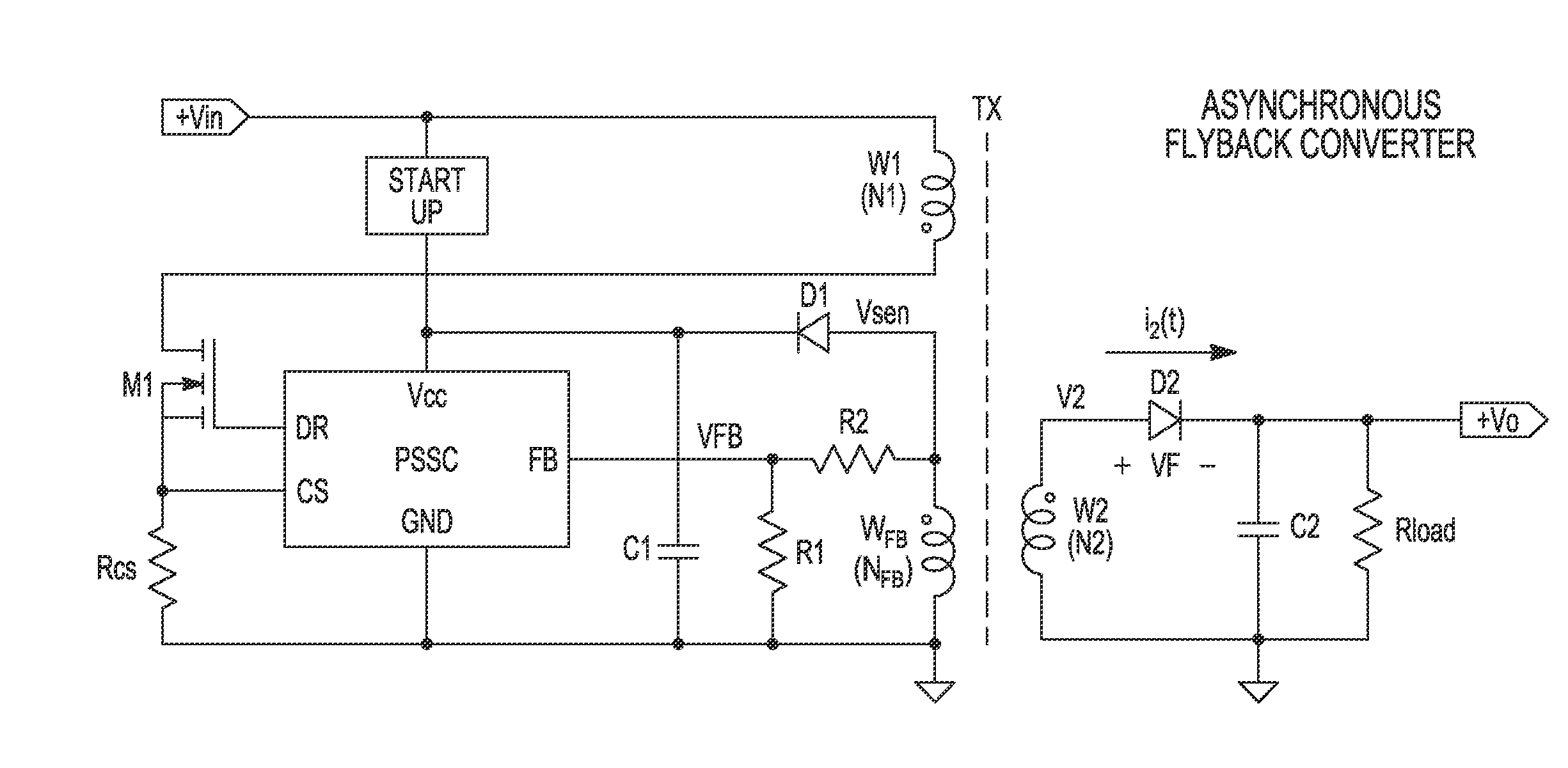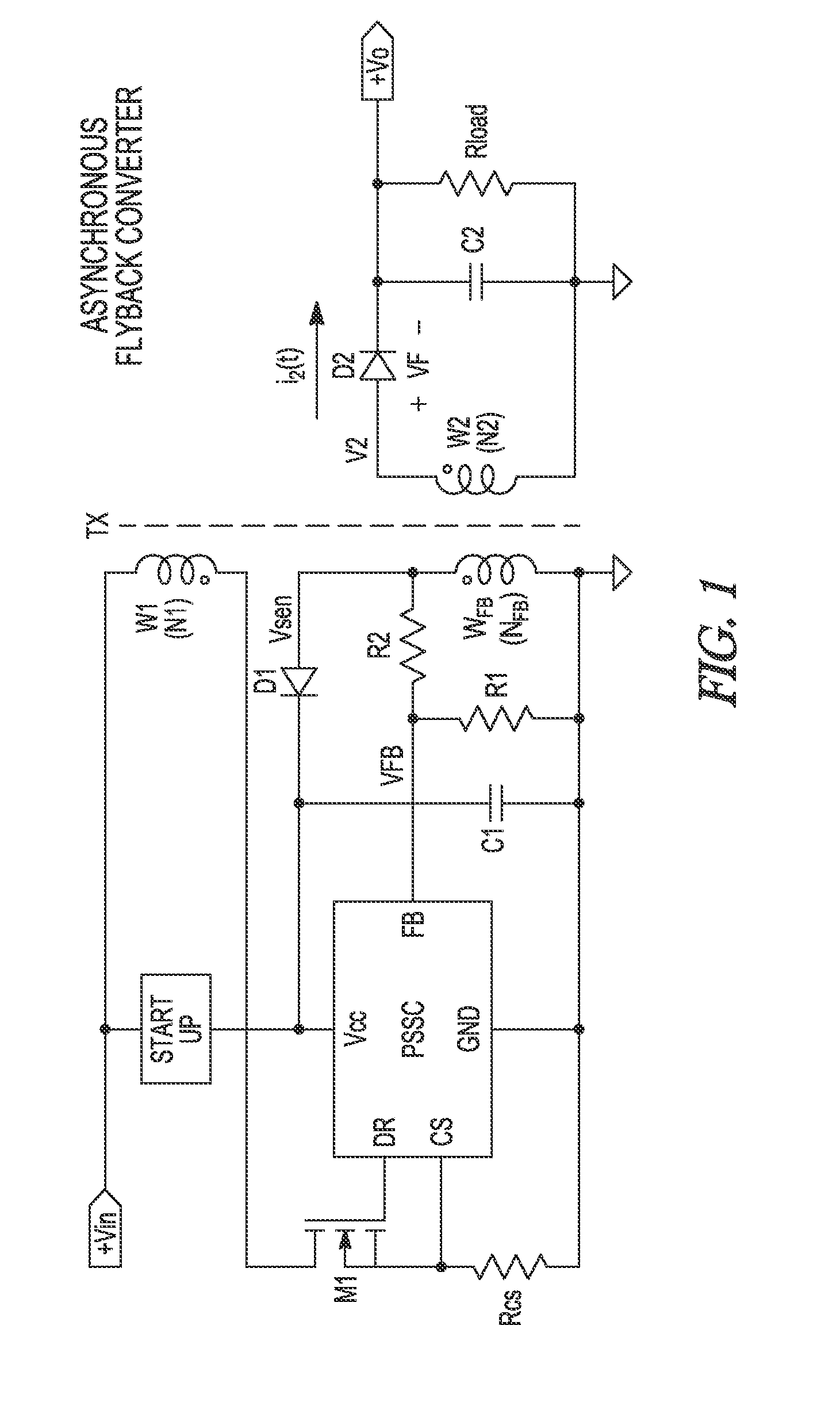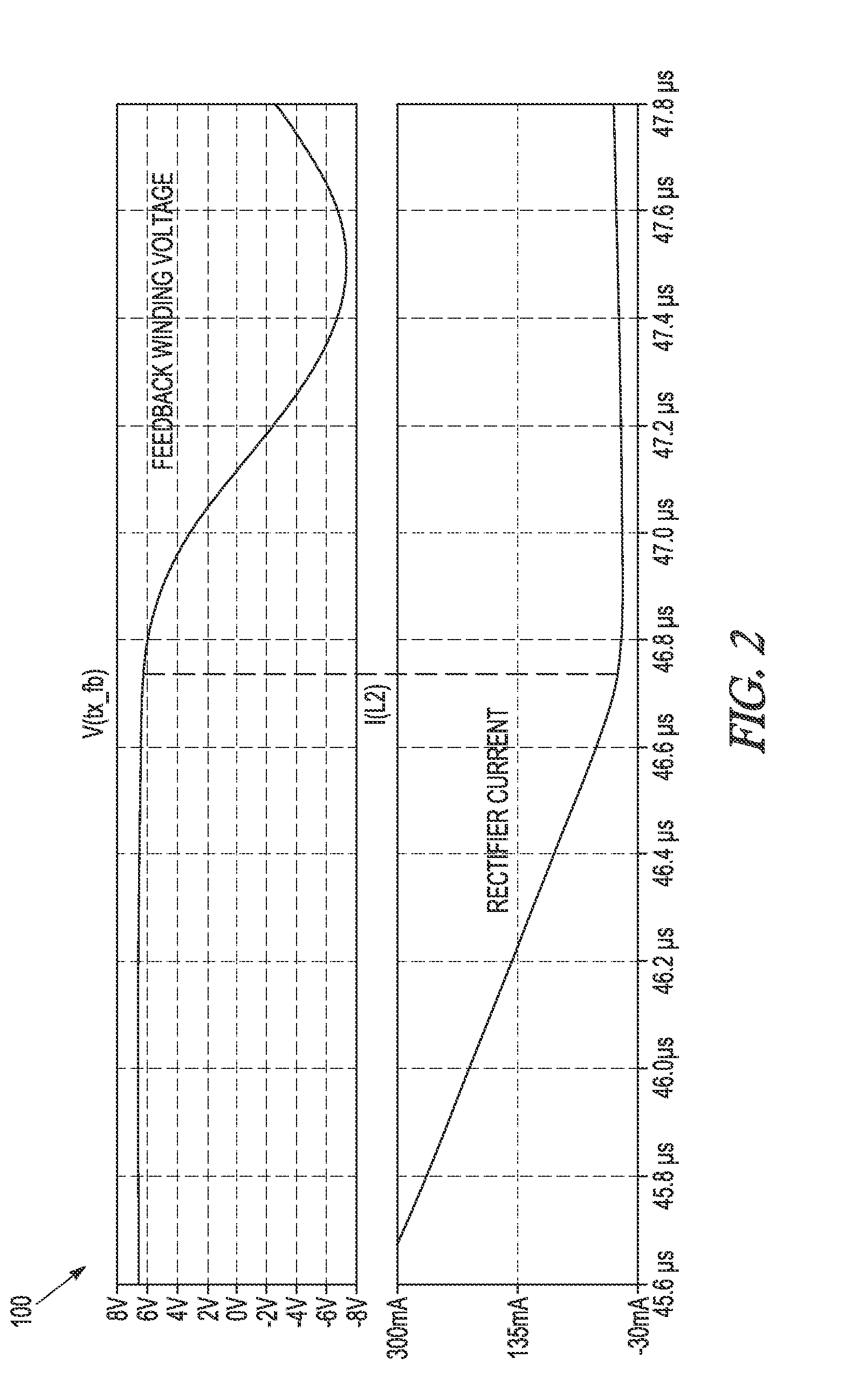Synchronous rectification
a rectifier controller and rectification technology, applied in the direction of dc-dc conversion, power conversion systems, climate sustainability, etc., can solve the problems of sampling errors, disadvantages, and vsub>f /sub>may become a source of errors
- Summary
- Abstract
- Description
- Claims
- Application Information
AI Technical Summary
Benefits of technology
Problems solved by technology
Method used
Image
Examples
Embodiment Construction
[0061]Generally, embodiments provide methods for soft turn off of a synchronous rectifier (SR) such as a field effect (e.g., MOSFET) SR, and a circuit implementing the method. The method may eliminate the sampling errors in Primary Side Sensing (PSS) controllers and / reduce EMI emitted from the SMPS; which may be caused by conventional hard driven synchronous rectifiers. Advantageously, an embodiment is utilised in a discontinuous, synchronous Flyback converter.
[0062]Embodiments deliver methods for driving a SR, preferably a MOSFET SR, in a way that is compatible with PSS used in Switched Mode Power Converters (SMPC), and circuit implementation of the said method. (Embodiments are applicable to DC-DC converters and AC-DC supplies, so that SMPC and SMPS (Switched Mode Power Supply) are used interchangeably herein).
[0063]The synchronous rectifier (SR) controller, or SR driver, may be a MOSFET driver specifically designed for use in a single switch Flyback converter operating in DCM. A ...
PUM
 Login to View More
Login to View More Abstract
Description
Claims
Application Information
 Login to View More
Login to View More - R&D
- Intellectual Property
- Life Sciences
- Materials
- Tech Scout
- Unparalleled Data Quality
- Higher Quality Content
- 60% Fewer Hallucinations
Browse by: Latest US Patents, China's latest patents, Technical Efficacy Thesaurus, Application Domain, Technology Topic, Popular Technical Reports.
© 2025 PatSnap. All rights reserved.Legal|Privacy policy|Modern Slavery Act Transparency Statement|Sitemap|About US| Contact US: help@patsnap.com



